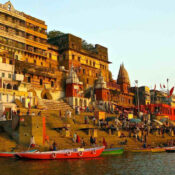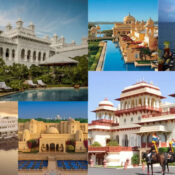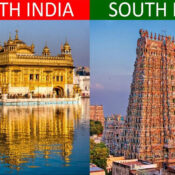
North vs South India: Which Region Offers the Best Travel Experience?
India is a land of contrasts, and nowhere is that more evident than in the striking differences between North and South India. From food and festivals to landscapes and languages, each region offers unique experiences. So, if you’re planning a trip and wondering which side of India is right for you, here’s a guide that breaks it down.
🕌 Cultural Heritage & History
North India
-
Home to Delhi, Agra, Jaipur, and Varanasi — cultural giants filled with Mughal and Rajput heritage.
-
Iconic monuments like the Taj Mahal, Qutub Minar, and Red Fort.
South India
-
Ancient Dravidian architecture and UNESCO temples in Tamil Nadu (like Meenakshi and Brihadeeswarar).
-
Influences from Chola, Vijayanagara, and colonial Portuguese/Dutch rule.
🏆 Verdict: History lovers will enjoy both, but South India offers older temple architecture, while North is famed for palaces and Islamic heritage.
🏞️ Nature & Landscapes
North India
-
Snow-capped Himalayas, hill stations like Manali, Shimla, and Kashmir.
-
The deserts of Rajasthan and wildlife parks like Jim Corbett.
South India
-
Lush green Western Ghats, Kerala backwaters, and tea plantations in Munnar.
-
Peaceful beaches in Varkala, Gokarna, and Pondicherry.
🏆 Verdict: Want mountains and cold? Go North. Prefer green hills, coastlines, and tropical vibes? South wins.
🍛 Food Scene
North India
-
Rich, creamy dishes: Butter Chicken, Rajma Chawal, Parathas, and spicy street food.
-
Influenced by Mughal and Punjabi flavors.
South India
-
Rice-based cuisine: Dosas, Idlis, Sambhar, Chettinad curries, and fresh coconut flavors.
-
Lighter, spicier, and often vegetarian-friendly.
🏆 Verdict: North India wins for hearty, rich cuisine, while South India shines for healthy, flavorful meals and diverse vegetarian options.
🎉 Festivals & Spirituality
North India
-
Grand festivals like Holi (colors), Diwali (lights), and Kumbh Mela.
-
Sacred cities like Varanasi, Haridwar, and Mathura.
South India
-
Rich temple traditions: Onam in Kerala, Pongal in Tamil Nadu, Mysore Dasara in Karnataka.
-
Famous temples like Tirupati, Rameshwaram, and Sabarimala.
🏆 Verdict: South India offers deeper temple traditions, while North India offers colorful chaos and massive religious gatherings.
🚆 Ease of Travel
North India
-
Bustling but chaotic — trains can be crowded, cities are bigger and more hectic.
-
The tourist triangle (Delhi–Agra–Jaipur) is well connected.
South India
-
More laid-back and less overwhelming for first-time visitors.
-
Cleaner cities, scenic train journeys (like Chennai to Kerala), and easier language access (more English speakers).
🏆 Verdict: South India is often easier and more relaxed for solo and first-time travelers.
💬 So, Which Is Better?
Both North and South India are rich in experiences, but they offer different energies:
| Choose North India if you love: | Choose South India if you love: |
|---|---|
| Grand palaces and forts | Ancient temples and rituals |
| Cold climates and mountains | Tropical weather and beaches |
| Festivals like Holi and Diwali | Onam, Pongal, and temple fairs |
| Rich, spicy gravies | Coconut-based, lighter meals |
| Buzzing, fast-paced cities | Peaceful, scenic towns |
🧳 Why Not Both?
If you can, mix both into your itinerary — explore the chaos of Delhi, marvel at the Taj Mahal, then fly down to relax in the Kerala backwaters or soak in history at Madurai’s temples.
✨ Final Take
Whether you’re drawn to the soul-stirring spirituality of Varanasi or the soothing rhythm of Kerala’s houseboats, India’s magic lies in its diversity. North or South, you’re bound to return home with stories for a lifetime.





